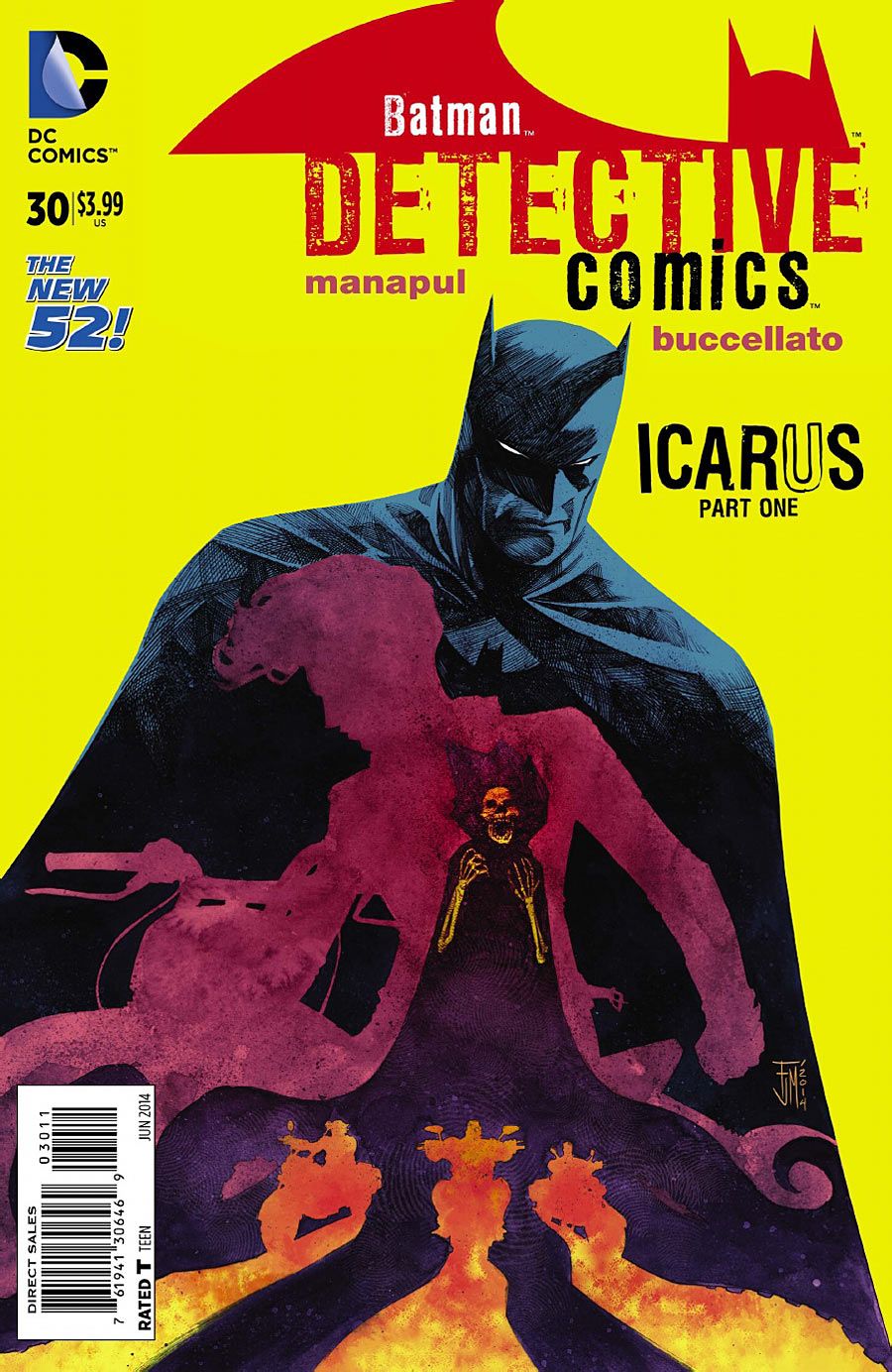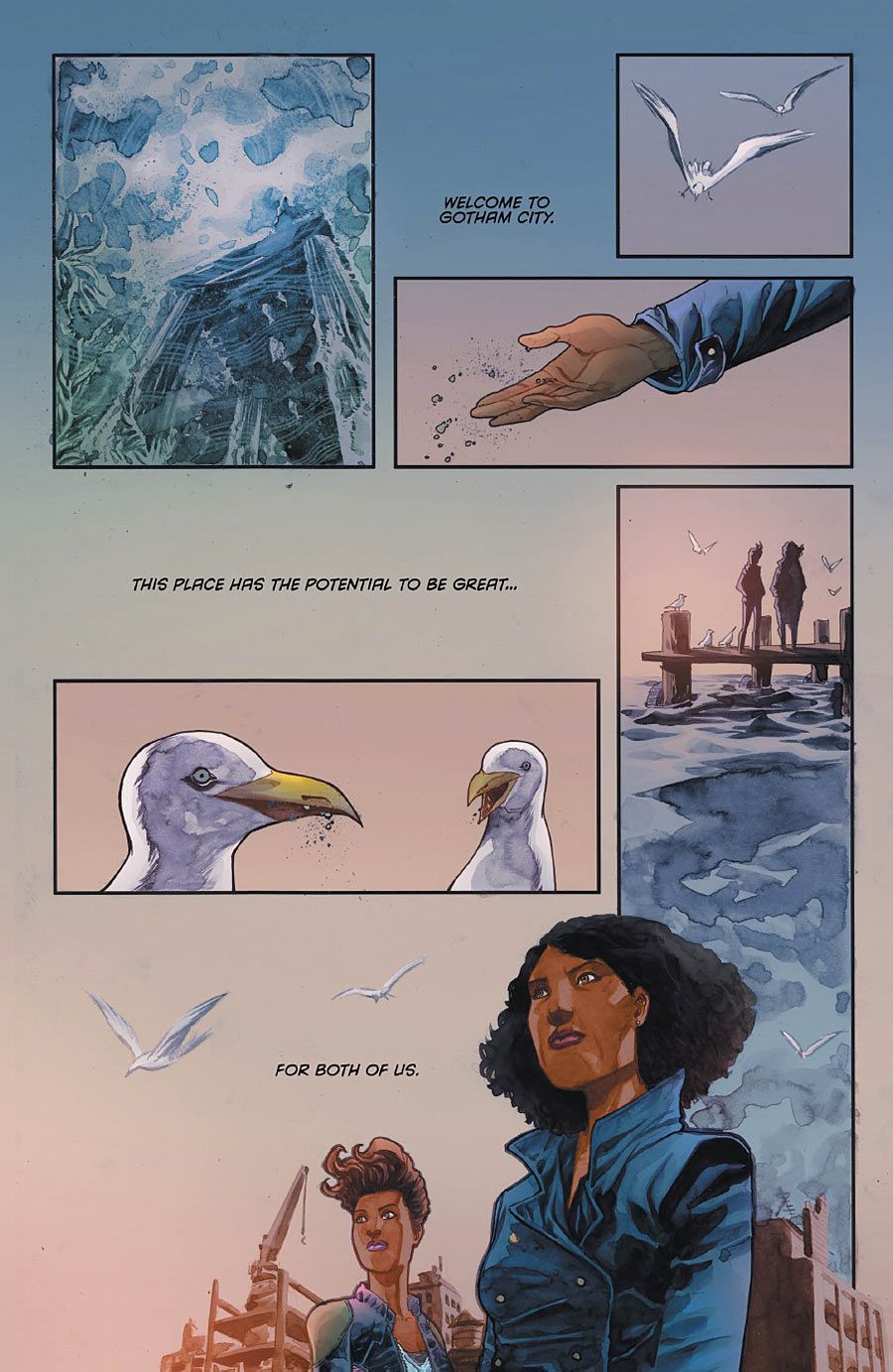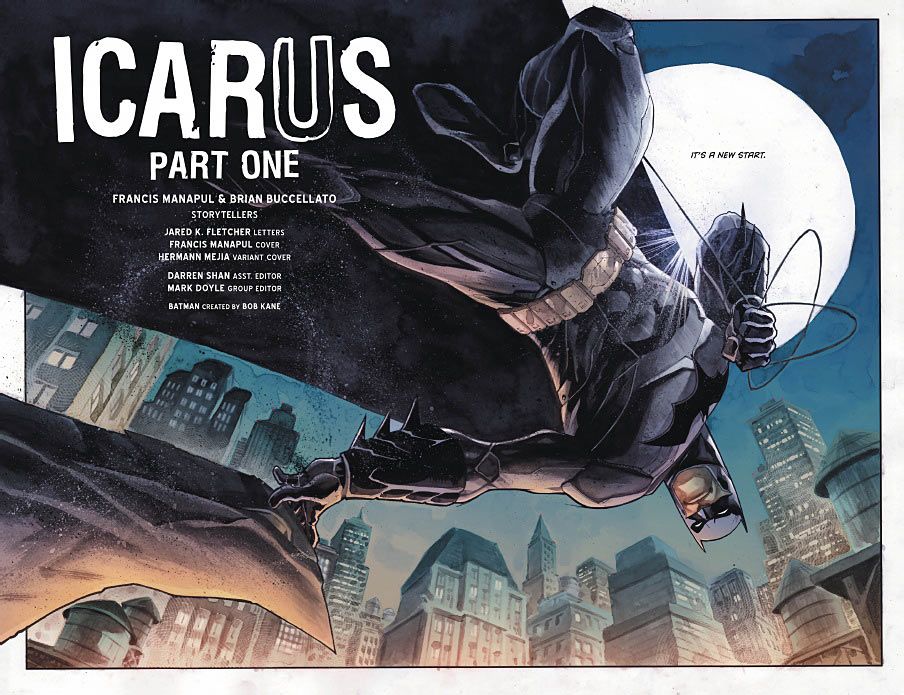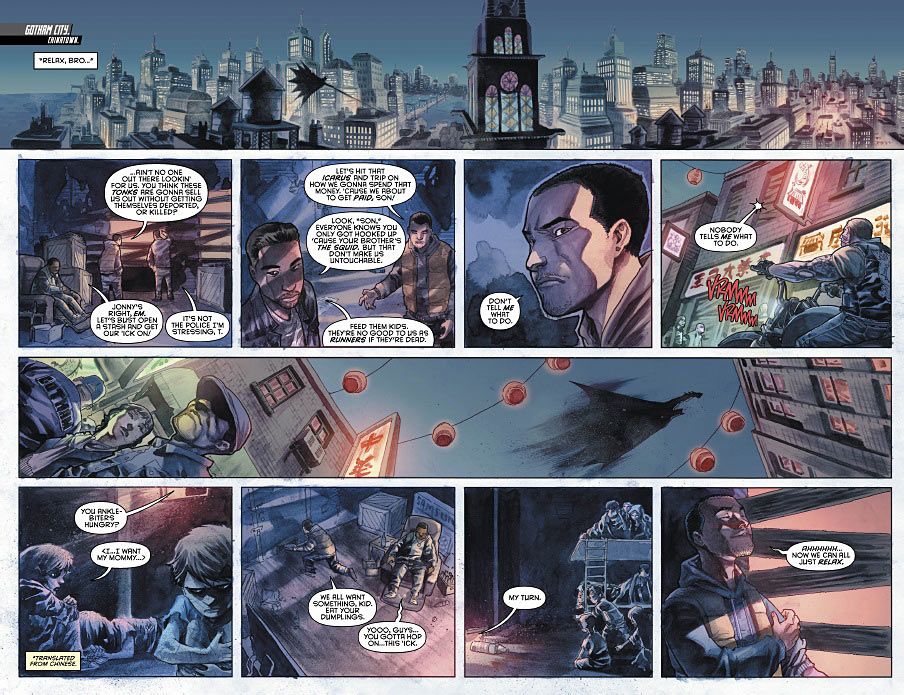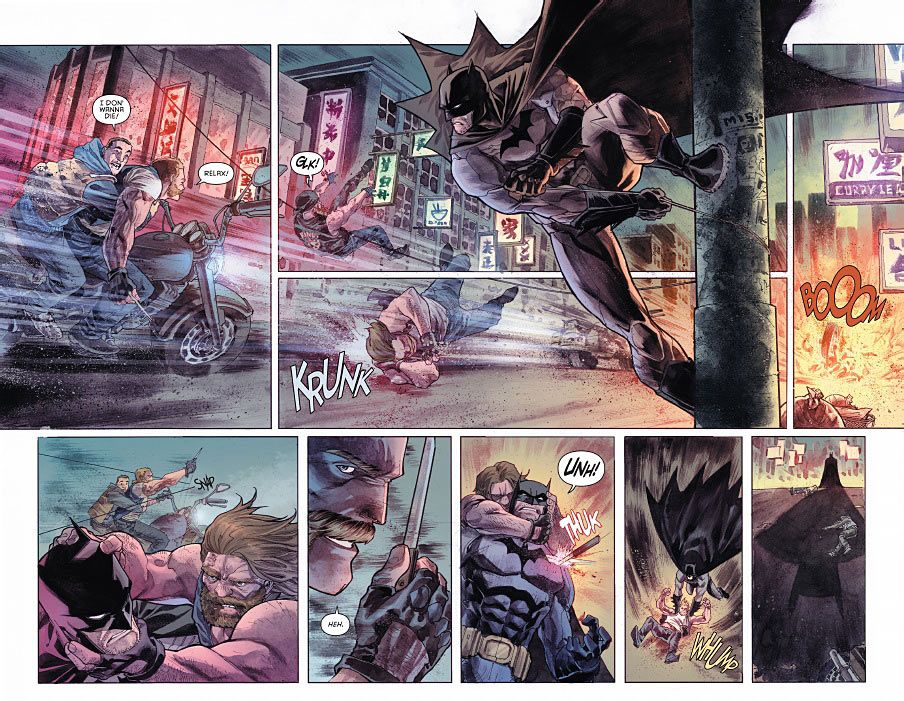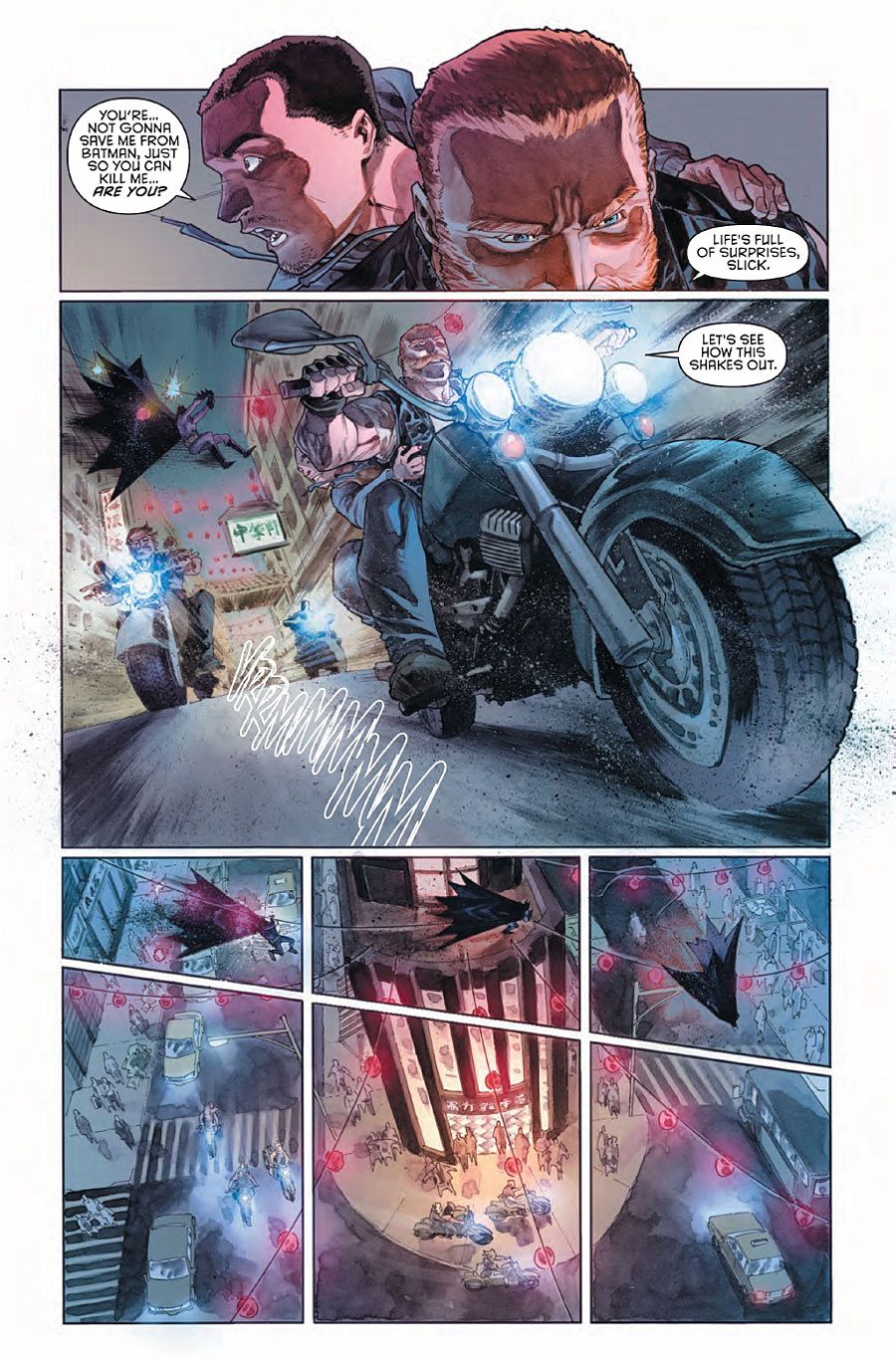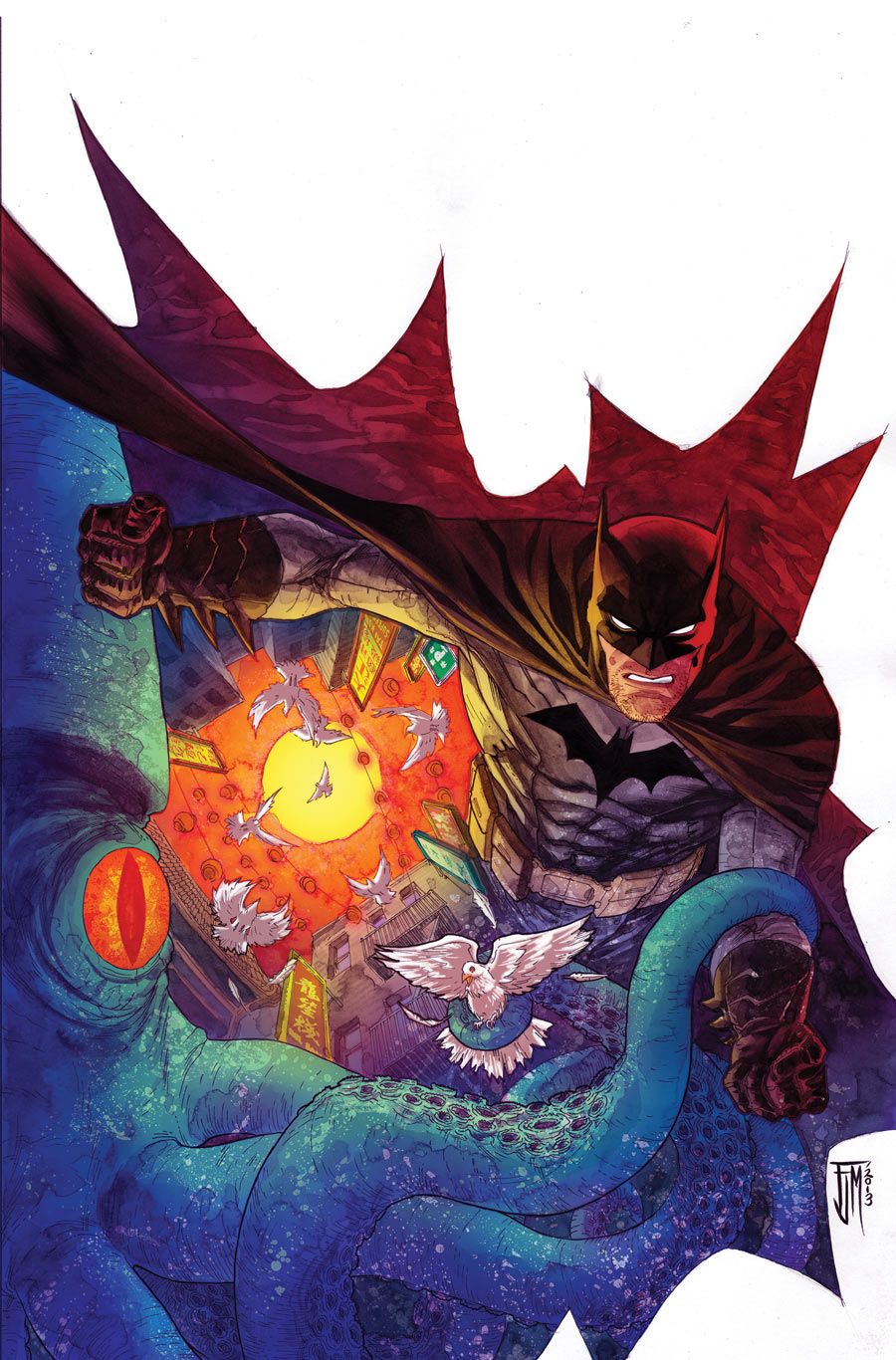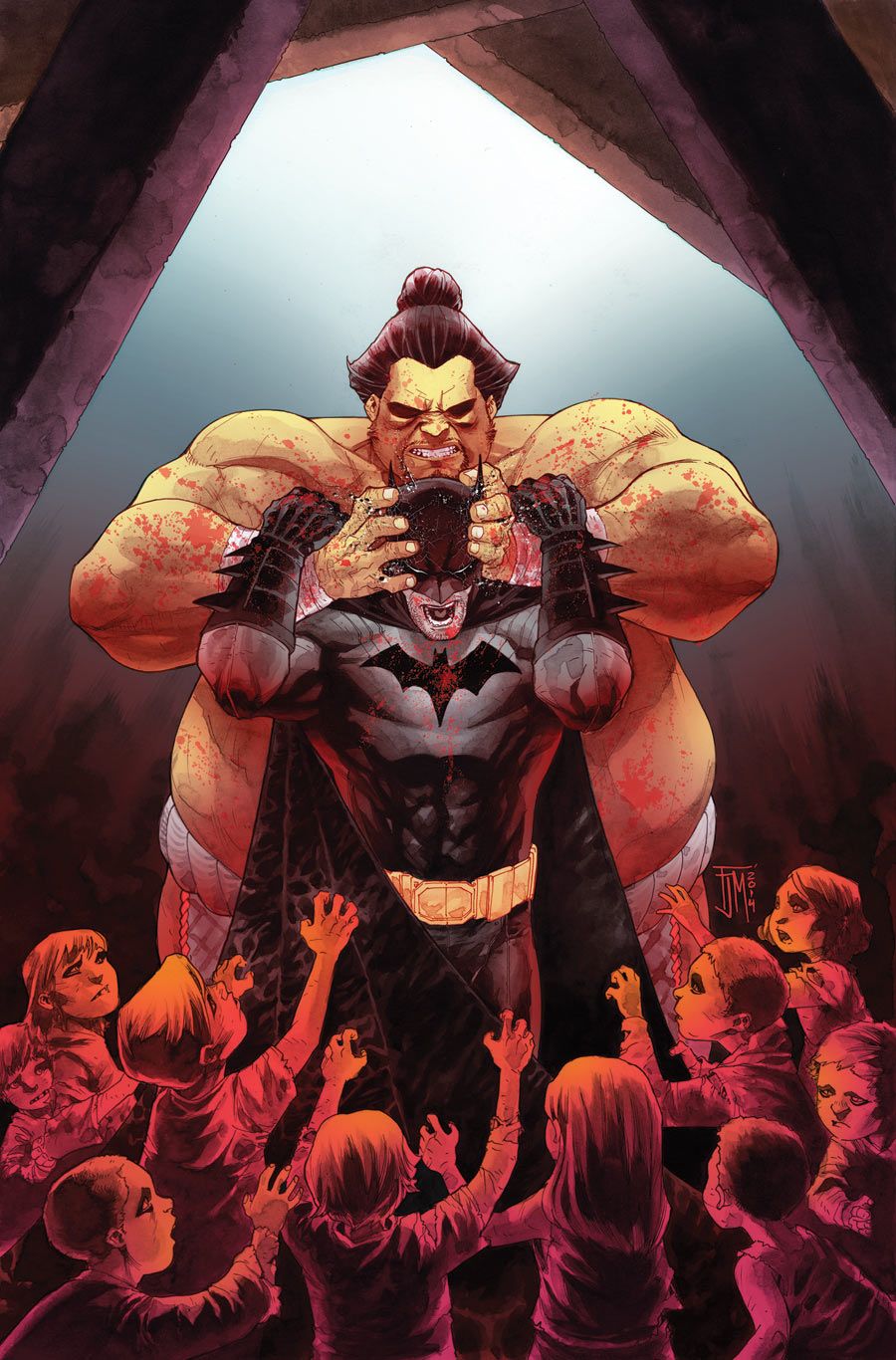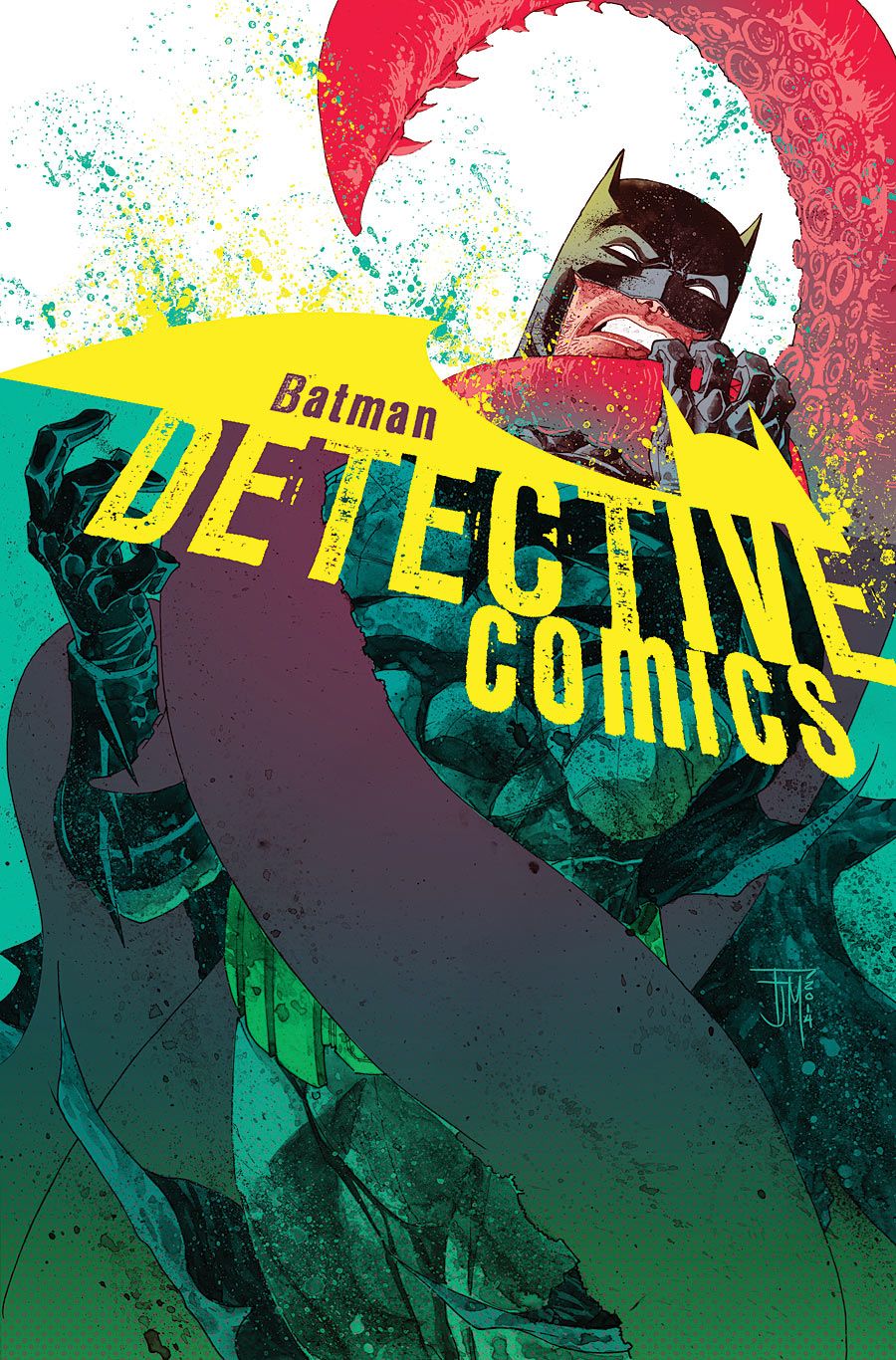Francis Manapul and Brian Buccellato, the co-writer/co-artist team behind DC Comics' New 52 take on "The Flash," are trading cities and heroes this week as they leave Barry Allen and Central City for Bruce Wayne, Gotham and the pages of "Detective Comics."
Manapul & Buccellato Go Gotham for "Detective Comics"
Beginning April 2, Manapul and Buccellato kick off their first arc with a story involving the narcotic Icarus (first send in the pages of the "The Flash's" Zero Year tie-in comic) and a re-imagined villain from comics history, crime boss the Squid. Speaking with CBR on the cusp of their first issue, Manapul and Buccellato touched on the themes of their first big arc, the cinematic approach to their artwork and story and their plans for making "Detective Comics" stand away and apart from the rest of the Batman universe.
CBR News: Your first issue of "Detective Comics" is out this week, and the last time we all talked you spoke about getting the chance to expand your work and go into the darker and grittier world of Batman. The solicits for your first issue and arc have mentions of murder and narcotics and a crime boss, so with this first arc are you trying to establish this book, not as a superhero fighting super villains, but as a grounded, almost "CSI" street-level approach to Batman?
Francis Manapul: Totally, though less "CSI" and more along the veins of "Se7en" or your traditional hardboiled detective story. It's a Batman book so there inevitably will be villains who are not normal, right? [Laughs] There's still going to be that aspect of it, but the core of the story is very much going to be a gritty detective story.
Brian Buccellato: Yeah, we're definitely more grounded in the cases than perhaps other Bat books, but that's partially us taking the concept that we're doing "Detective" and not "Batman" or "Batman and Robin" and going with what we think the book is best at doing.
Buccellato and Manapul Confirm Exit from "The Flash"
With that in mind, let's talk about the first crime Batman is solving in your run. We've got a crime boss named The Squid involved in this -- what can you tell us about the story in your first arc? What will readers be jumping into in your first issue?
Buccellato: In "Flash: Zero Year" #25 we established a Harvey Bullock case that involved a then new drug called Icarus that Barry and Harvey ended up taking off the street. Well, five years later the drug has come back and it plays a major role in the story, and it does involve the Squid and it involves a murder and pulls both Bruce Wayne and Batman into the case. It's all connected to this murder -- I guess we don't want to say who is murdered, but there's a murder that brings everything together.
Manapul: Yeah, and another aspect of the story which ties into the detective part of it is that Harvey Bullock is going to play a big part in our story. This is the case that he thought they had solved back in "Zero Year," so when this designer drug called Icarus resurfaces in our first issue it pulls Harvey Bullock back into the story with Batman and we kind of have this, I don't want to say friendly rivalry--
Buccellato: I'd say it's an unfriendly rivalry! [Laughs]
Manapul: Absolutely! It's almost a very aggressive rivalry that's about who is the better detective and who is going to crack the case first.
Buccellato: There's some big stakes because his partner died as a result of the drug Icarus, for those who didn't read "Flash" #25. So he has a personal stake in what's going on, and Batman/Bruce has his own personal stake in what's going on because of his association with the victim in the current time.
With that, we've got the crime boss The Squid and we've seen the two covers where Batman is literally wrestling with a squid. For you two, is part of making "Detective" your own creating new villains or reimagining villains as more street-level for Batman to handle as a detective?
Manapul: Well there's definitely going to be new villains, but the Squid is actually an old villain. I think Brian and I just literally Googled "First Batman Villains Ever." [Laughter] We asked them what we have and being a secondary Bat-title, for lack of a better term, there aren't a lot of Bat villains who aren't getting used somewhere else.
Buccellato: Yeah, "Batman Eternal" is going to be a weekly book, and they are throwing everything but the kitchen sink into a book that is going to have 52 issues in one year. We figured instead of competing for the attention of some of these characters, let's focus on one we can make our own.
ECCC: Snyder and More Discuss "The Eternal Batman"
Like you said, "Batman Eternal" is starting at the same time your "Detective" run is. Will "Batman Eternal" impact what you're doing in the comic or affect your status quo, or are you trying to keep this separate within the shared Batman universe?
Buccellato: We're going to reflect things that happen in "Batman Eternal;" the story we have planned we didn't plan in conjunction with "Batman Eternal," but we read the documents and we know what's happening, so the landmark events that happen in the Batman universe will be reflected in our book. But we really wanted to make a book that was our own, so that, let's say you only have four dollars and you love Batman but you can't spend a billion dollars, then maybe you'll pick up "Detective." It's just more self-contained if you want to read one Batman story.
Manapul: Yeah, you pretty much nailed it there. We are going to be in the same universe and the same timeline, but this is kind of one aspect of the Batman universe. Again like Brian said, this will be a Batman story people will be able to jump into and not feel like they're missing anything.
Looking at the book in general, you guys had such a specific style to "Flash" and specific influences like [Will] Eisner. When we spoke last you both were excited to take the artwork in a new direction -- did you find that your approach to the visuals changed once you were working on the book? Is your style evolving away from "Flash" as you go through issues and this first arc?
Manapul: It's definitely evolving. It's interesting, when I was working on the "Flash" I was heavily influenced by Eisner, I think that's really obvious. It's almost like I'm moving up a few years later because now I've been looking at [Jim] Steranko's artwork, you know? "Flash" was me letting loose, if that makes sense, and "Detective" is more practiced control. I don't want to say it's not energetic, because it had energy all its own, but it's more about atmosphere and the storytelling and the beats of the story. There's definitely inspiration there and I hope that fans aren't disappointed that they're not getting Eisner pages in this comic book, but the sort of story Brian and I are telling needs a more grounded approach to art and story. That said, I think an aspect of the book, that's more prominent than on "Flash," is our new editor Mark Doyle who is a fantastic editor, more or less let go of the leash with us. We can do whatever we want and go for these big, symbolic covers. The covers are sort of about questions. Even things like the logo -- you wouldn't believe how much being able to tweak the logo worked to my advantage -- there was such a positive effect on the vision of the comic.
RELATED: Buccellato Leads a "Rogues Rebellion" During "Forever Evil"
Buccellato: Yeah, he actually is incorporating the logo artwork into the cover during the art phase rather than slapping it on at the end, so I think there's a lot more harmony in his latest covers because he has the ability to design the entire cover rather than hoping for the best when it comes time to put the logo on.
Manapul: Exactly! It feels almost like I'm art directing a magazine cover where I get to decide where all the placement of things are. Obviously there's parameters of where I can push the logo, but just that luxury I've never had before -- I can change things about the cover itself, and being able to have that control.
What's struck me about the covers is that they feel like they could be movie posters in that they are very cinematic. Were there big film or movie art influences on the covers?
Buccellato: The covers are all Francis; he's doing the art all the way through colors.
Manapul: For the covers the cinematic approach is what I was more or less going for. I was also looking at a lot of Saul Bass and a lot of amazing posters from that time. There are a lot of Bat books and we want this to feel like a different kind of Bat book; I think the covers do reflect that, and you can see it in the first couple of images that have been released with Batman. The cinematic approach reflects the approach we take to the comic.
Buccellato: Yeah, to that point of the cinematic approach, I think inside the book the way the story unfolds is also more cinematic than we've done in the past. Historically since Frank Miller the internal monologue of Batman is a key part of the Bat books, getting inside his head, the dark film noir narrative. We're going to be very economical with our use of captions and try to tell the story cinematically, the way you'd watch a movie without voiceover, so I think that's another way we're separating ourselves from other Bat books. Rather than just being inside Bruce's head all the time, we're really working to tell the story without relying on all of that.
Manapul: Yeah and it's not so much a conscious effort as something that came up as we were writing our first issue. I think a lot of that came from the fact we want readers to find out about things as Batman finds out about them. Like Brian said, the monologue is a big part of Batman and you can hear him work things out in his head, so what we're trying to do is play with that.
Finally, what is the long-term goal for both of you both in terms of Batman and what you want to do on "Detective Comics?"
Buccellato: The first story arc is going to be about five issues so we'll wrap up the storyline with the Squid and the murder for the first half of our year. Then with the second half we have another character -- we do know who we're using and who it's going to be, I'm not sure if we can say more than that.
Manapul: The first part is more about the emphasis toward the parent and child dynamic and family, and our second arc is more of an epic, bigger story that will affect the city of Gotham. The first one is a more personal story and then the second one really opens up. The thing is the second half of our first year that story more or less is born out of the first arc.
Buccellato: It's all connected and there's a natural flow to it, but it definitely changes the perspective from a more personal story, like he said, about family and parenthood and responsibility. That's a lot of the things we touch on in the first arc, that leads to a -- not cataclysmic event but there is a major event at the end of the first story arc that has ramifications that rolls into our second villain.
Manapul and Buccellato's run begins in "Detective Comics" #30, on sale April 2.


